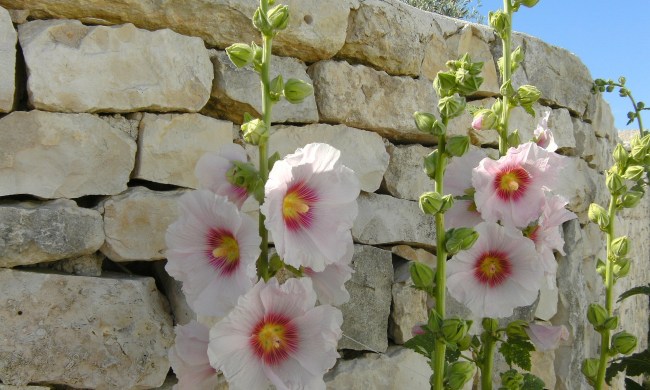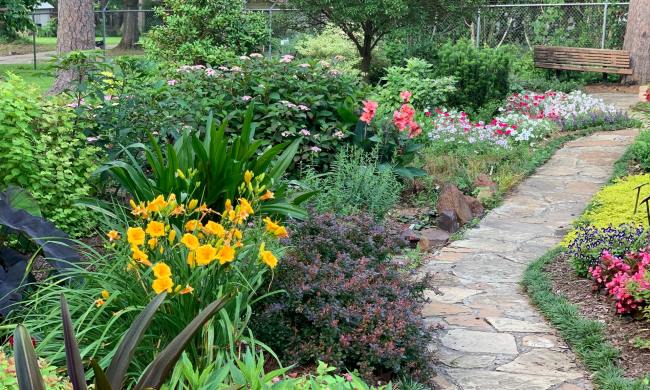If you’re looking for a flower to add to your spring flower garden, then the peony might be just what you need. These elegant herbaceous perennials look sweet and delicate, but they’re actually quite hardy. Whether they’re in your garden or in containers, indoors or out, peonies are sure to be a crowd-pleaser. You can get started growing your own today using this simple peonies care guide. From planting to pests, we’ll answer all your peony care questions to help you keep your peonies happy and healthy.
Planting peonies

Peonies are most commonly found as bare root tubers (meaning just the tuber, without any soil) or are mature plants. Mature plants are easier to find later in the year and are usually sold as container plants. If you choose one of these, look for one that hasn’t fully bloomed yet. Flowers that are already fully open will fade more quickly, so choosing a plant with buds will help you get the most out of your plant.
Whether you choose a more mature plant or a tuber, make sure to plant it in slightly acidic, well-draining soil. Choose a place that is in full sun or that gets full sun in the morning and light shade in the afternoon, if you live in a hotter region. When planting peonies in your garden, spacing is important. Plant your peonies a few feet away from structures or larger plants to ensure they have room to grow.
Peony care

Caring for peonies isn’t difficult, as they are hardy and adaptable plants. Most of peonies care is watering. While your peony is growing and establishing a strong root system, water it weekly except during rainy weather. When watering peonies, be sure to soak the soil thoroughly, but try to avoid getting the leaves wet. Once the peonies are established, you can cut back on watering. Once every week and a half is typically often enough, unless the weather is particularly hot and dry. Fertilizing your peony in early spring and mid-fall can help your peony thrive. A high-potassium fertilizer is great for encouraging lots of flowers and healthy growth.
Deadheading isn’t necessary, but it can encourage your plant to keep blooming. Pruning or cutting peonies back will also help encourage healthy growth. Larger shrub or tree peonies can be pruned in either early spring or mid to late fall. Pruning in spring promotes quick growth at the cost of some of the flowers, while trees pruned in fall will grow more slowly but not lose out on any flowers. Smaller, herbaceous peonies can be cut back after the first hard freeze of the year.
Pests and diseases

Small pests like ants, aphids, Japanese beetles, and thrips can sometimes bother peonies. They can be taken care of with pesticides and pest repellents, but there are other options as well. Adding features and plants to attract ladybugs, birds, spiders, and other predators that eat these pests can control the population and prevent infestations from becoming severe. Regular weeding and clearing away dead or dying plants can eliminate the shelter these pests live in as well.
Peonies that have been overwatered or that have spent too long with damp leaves are prone to fungal infections such as leaf spot. Taking care with your watering routine can prevent these, and fungicides can help prevent them from spreading. However, in some cases, the best course of action is to remove infected plants.
One common and devastating fungal infection is botrytis blight, also called peony wilt. This infection is caused by the fungus Botrytis paeoniae. Like most fungal infections, damp weather or waterlogged soil and wet leaves cause the fungus spores to grow and spread. The first signs of peony wilt are small black or brown spots on the leaves, stems, and flower buds. These spots spread, causing stems to collapse, leaves to droop, and buds to stay closed rather than bloom.
While there are some fungicides that can treat mild cases, prevention is the more effective solution. Fungal infections are more likely to be severe if the plant is already weak, so proper peony care to keep your plant strong is key. Additionally, avoid getting the leaves of your peony wet when watering it, and water it in the morning to prevent your plant from sitting in damp soil overnight.
Peonies are stunning flowers that make a great addition to any flower garden or home. Whether you opt for a tall and branching tree or shrub or go for a shorter, leafier herbaceous variety, peonies are sure to please. Peony care is easy once you have an established routine, and they’re perfect for beginners. With this peonies care guide, you’re ready to start planting as many peonies as you want.




